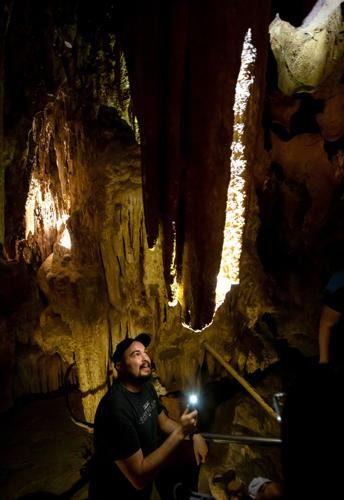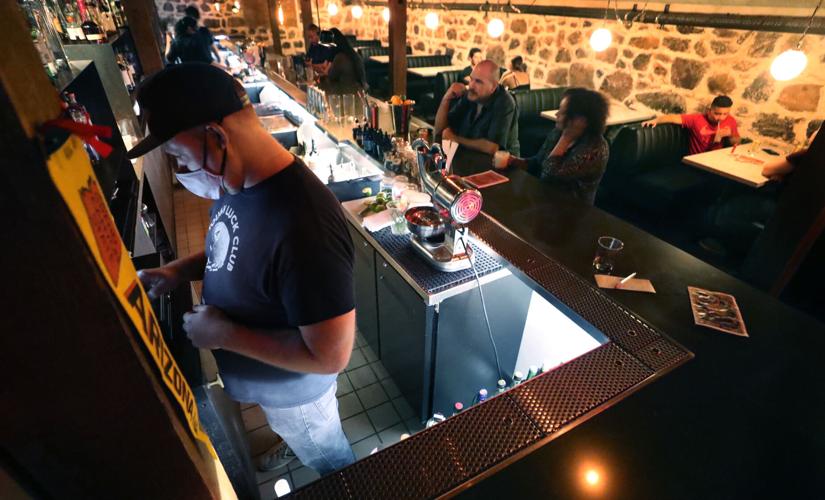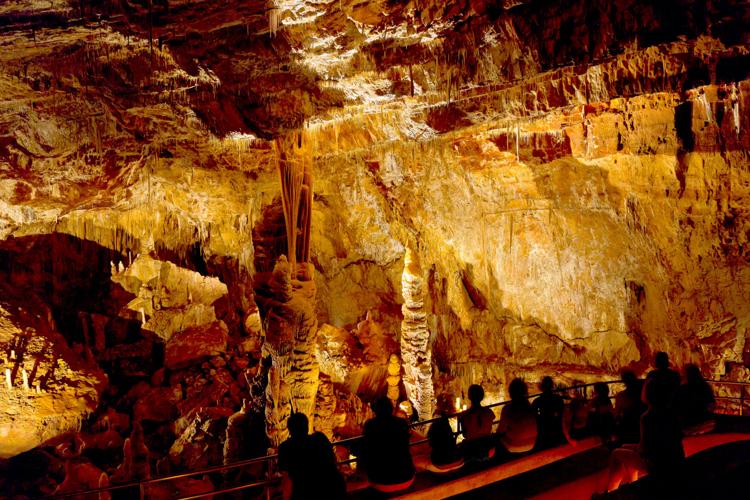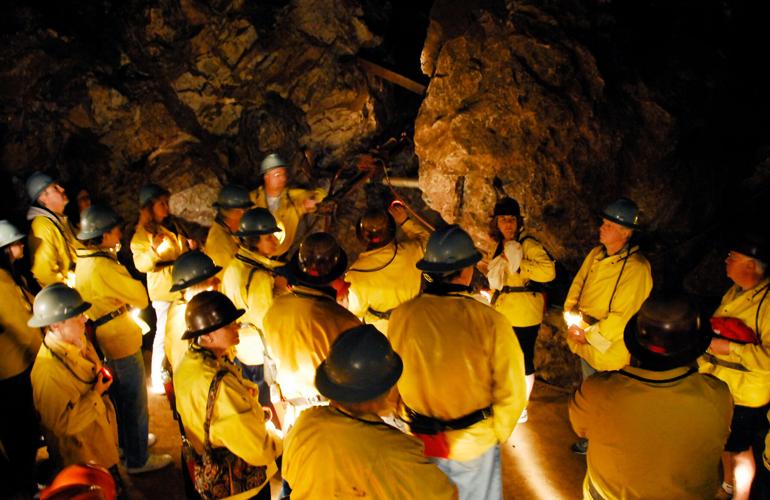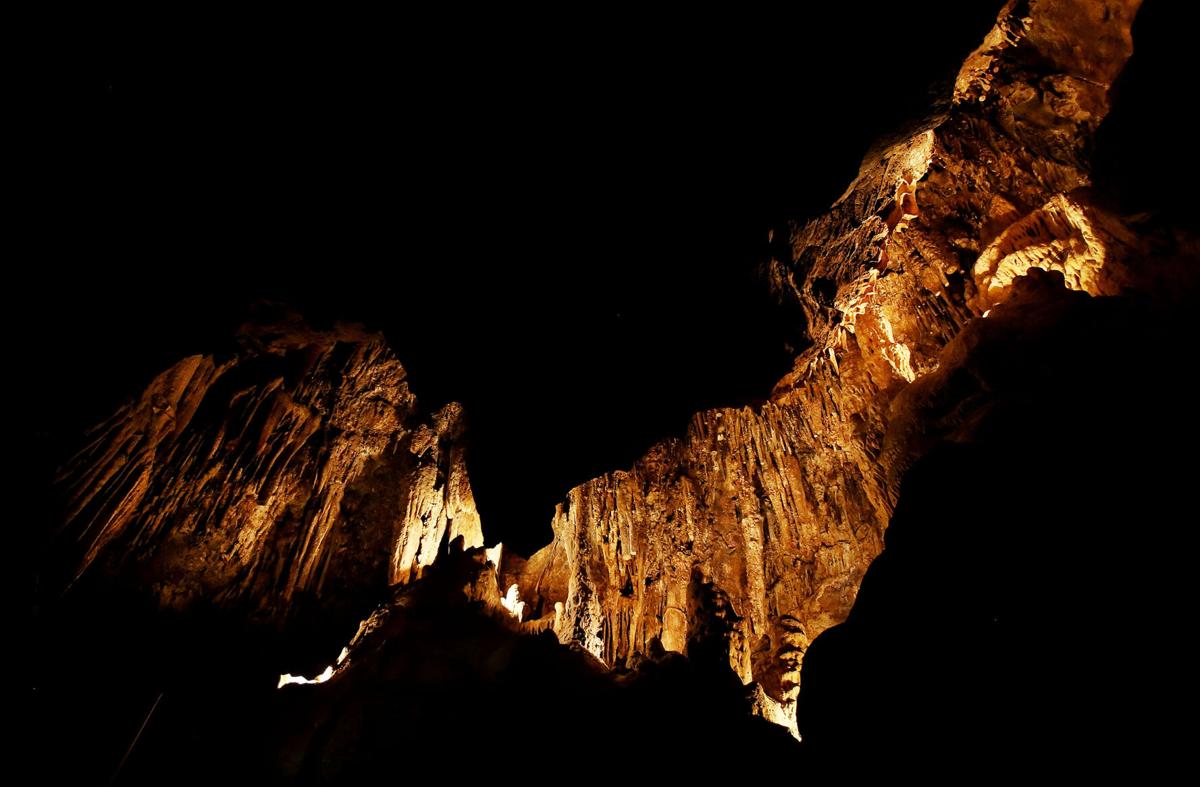If you scratch just below the surface in Tucson, more often than not the only thing you’ll find are fingernails full of caliche.
Besides the desert’s ground squirrels, kangaroo rats and rattlesnakes, this city is a mostly above-ground town.
But pockets of history, culture, food and drink can be found below our feet if you know where to look.
Feed your minds and your stomachs while trying some of these underground activities.
Tough Luck Club
101 E. Pennington St., 882-5550; facebook.com/ToughLuckClub
One of the finest craft cocktail bars in Tucson is in what was once the morgue for a long-gone funeral home.
Tough Luck Club opened in 2014 in the basement of Reilly Craft Pizza & Drink, a restaurant that has inhabited the old Reilly Funeral Home building at 101 E. Pennington, for the last nine years.
If you are new to Tucson, Tough Luck Club is a bit of a hidden gem. While active on social media, its only public entrance is a flight of stairs leading from Reilly’s back-area beer garden.

Bartender Mike Walsh rings up a tab at the Tough Luck Club, under Reilly Craft Pizza at 101 E. Pennington.
Its menu features a mix of traditional cocktails, their takes on the Old Fashioned, Moscow Mule and other bar staples, alongside more adventurous libations with interesting names, such as Saint Amand’s Favor, a drink that incorporates génépy, raspberry eau de vie, lemon juice, vanilla syrup and an aromatic bitter; and Across the Golden Border, named after a song by Tucson band The Resonars, that Tough Luck beverage director Karl Goranowski describes as a “tropical escape to Rocky Point behind the bar here in Tucson.”
Goranowski, who returned to Reilly for its recent reopening after five years spent in San Francisco, said Tough Luck Club’s greatest attribute is its accessibility.
Sure, it has high-end cocktails with out-there ingredients, but it also serves a mean strawberry daiquiri and has a regular $5 beer and a shot special.
“It is pretty inviting,” Goranowski said. “It is an excellent cocktail bar, but it has also become a pseudo-dive bar and pseudo-party spot. There is a little something for everyone.”
Goranowski said the muted lighting and overall atmosphere, along with the fact that basement bars just don’t exist in Tucson, makes it a welcoming place to escape the heat.
“You can really get lost in here,” he said. “Even in the middle of a hot summer afternoon, it is cool and dark. You can spend a few hours down here and not even realize it.”
Tough Luck Club is open 5 p.m.-midnight Wednesdays-Thursdays and on Sundays, and 5 p.m.-1 a.m. Fridays-Saturdays.
Tucson Museum of Art
140 N. Main Ave., 624-2333; tucsonmuseumofart.org
When the Tucson Museum of Art first opened its doors in 1975, the Tucson Citizen referred to its design — a large open space built down into the ground, accessible by sloping walkways that spiral to the lower levels along art-covered walls — as the “well.”
Designed by William Wilde & Associates, Paul Piazza, the museum’s director at the time, said the layout allowed patrons to examine works in a different way.

Auguste Rodin’s Adam stands on the lowest level of the Tucson Museum of Art.
“You’ll be able to look down at a sculpture, up at a painting,” he told the Citizen. “The architect’s concept, the board’s concept, is that people should be able to view art from different levels.”
Today, the lower level is home to most of the museum’s permanent galleries, said spokeswoman Anne Thwaits. Those works come from the TMA’s collection of more than 10,000 pieces of art.
The galleries represent a wide swath of genres and mediums, from European modern to interpretations of the American West.
It’s not every day you can say you’ve looked at a Maynard Dixon painting at a subterranean level.
The museum is open with timed sessions from 10 a.m. to 5 p.m., Thursdays through Sundays. Admission is $12 with discounts available. Reservations are encouraged.

The wine cellar and dining room at El Charro, used for overflow and large parties, features stone cellar walls at 311 N. Court Ave.
After you are through with the arts and culture, hoof it over to El Charro‘s downtown location, 311 N. Court Ave., within walking distance of the museum, and enjoy a chimichanga or the restaurant’s popular carne seca platter, within its stone-walled wine cellar.
The underground surroundings are generally used for when things get busy upstairs or for private parties, so call ahead for availability, 622-1922.
Colossal Cave Mountain Park
16721 E. Old Spanish Trail, 647-7275; colossalcave.com
If cave walls could talk, we imagine the walls at Colossal Cave would have more than enough to say.
The cave has seen its share of history, starting with the Hohokam people using it as shelter as far back as 900 A.D., according to the Colossal Cave Mountain Park website.
It has served as a hideout for outlaws, a resource for bat guano and a project for the Civilian Conservation Corps. For decades, its primary purpose has been that of a tourist attraction.
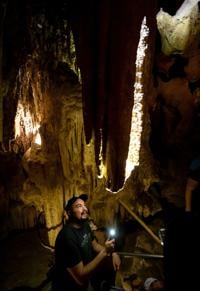
Rafael Sanchez, tour guide, shines a light on a stalactite named Fang during a classic cave tour in Colossal Cave, 16721 E. Old Spanish Trail. Colossal Cave Mountain Park offers different cave tours including a classic cave tour, the ladder tour and a “lights out” tour.
Depending on the time of year, up to 1,500 people a day enter the cave to see the stalactites, stalagmites and other rock formations.
Several tours are currently being offered. The classic tour takes you on a 40-minute, half-mile loop inside of the cave, while the ladder tour, meant for more adventurous patrons, delves off the beaten path, says park director Tony Gonzales.
“You can’t be scared and you can’t be claustrophobic,” Gonzales said of the ladder tour. “There are ladders, scaffolding, places where you have to squeeze in. You have gloves on, knee pads, helmets, a head lamp, because there is no lighting back there.”
Colossal Cave also offers a “Lights Out” lantern tour that lets you explore the cave system like early explorers once did, in the dark.
Its Wild Tour, which takes its most daring visitors deep inside the cave through tight spaces and unmarked pathways, is on hold until the fall.
Gonzales came onboard with Colossal Cave Mountain Park in late 2019, shortly after management was taken over by Ortega National Parks, a company that runs facilities at different parks from Hawaii to Maine.
Colossal Cave stayed open through most of the COVID pandemic, with all of the usual restrictions in place. At this point, many of those restrictions have been lifted.
“For a while, it was a lot of locals, but a lot of people are starting to come out now,” Gonzales said. “They are from back East, the Midwest. They are coming from everywhere.”
The classic tours are $20 for adults and $10 for children ages 5-12. Children under 5 are not permitted. The ladder tours, which are only available to ages 12 and older are $40. “Lights Out” tours are $25. Gonzales said reservations at colossalcave.com are highly recommended.
Keep the cave theme going with a trip 50 minutes east of Tucson to Kartchner Caverns State Park, off Arizona 90 on the way to Sierra Vista.

Discovered in 1974, Kartchner Caverns is home to one of the world’s longest soda straw stalactites, the world’s most extensive formation of brushite moonmilk and the tallest and most massive column (58 feet) in Arizona.
Discovered in 1974, the caverns are home to one of the world’s longest soda straw stalactites, the world’s most extensive formation of brushite moonmilk and the tallest and most massive column (58 feet) in Arizona, according to the Kartchner Caves website, azstateparks.com/kartchner
The site strongly encourages making reservations ahead of time. There are several tours to choose from, including a Rotunda tour, a Big Room tour and a helmet and headlamp tour. Admission is $23 for adults per tour and $13 for children, ages 7-13 year olds. Children 6 and younger are only allowed on the Rotunda tour. Admission for them is $5.
Photos are not permitted inside Kartchner Caverns unless you take the photo tour, which will run you $125. A separate admission to the park itself is $7 per vehicle.
Farther afield
With all of the artsy, boozy fun that can be had in Bisbee these days, it is easy to forget that this destination nestled in the Mule Mountains of Cochise County began its life as a mining town.

The Queen Mine tour in Old Bisbee takes you, by train and by foot, on an hour journey into the historic copper mine.
If the giant open pit just south of Old Bisbee doesn’t jog your memory, perhaps a tour of the Queen Mine will. Queen Mine Historic Mining Tours take place several times a day and admission is $14 for adults and $6.50 for ages 6-12. Children younger than 6 are not allowed underground.
The tour takes you, by train and by foot, on an hour journey into the mine, where a tour guide talks about Bisbee’s mining history, the equipment used and the geography of the mine itself.
The mine has been operating tours with limited capacity since last June, but has recently increased its numbers. Up to 32 people are now allowed to go on the tour at one time.
“This summer has been busier than past summers, even pre-pandemic,” said mine tour manager Doug Graeme. “Things have been popping.”
More information about the Queen Mine Tour can be found at queenminetour.com
Hop on Interstate 19 toward the US-Mexico border and head about 40 minutes south to Green Valley for a trip to the Titan Missile Museum, 1580 W. Duval Mine Road, the only remaining Titan II site open to the public, according to the museum website, titanmissilemuseum.org
Take a 45-minute tour of the underground facility and learn all about the Cold War missile complex, sit in on a launch simulation and take a gander at the missile itself.
The Titan Missile Museum is open 9:45 a.m.-5 p.m. Thursdays-Mondays. Admission is $13.50 with discounts available.
A tortoise at an eastside home was grateful for cool water during this heat wave. After drinking, the tortoise eventually dipped more of its head and a foot into the water. Video by Nick Murray.


